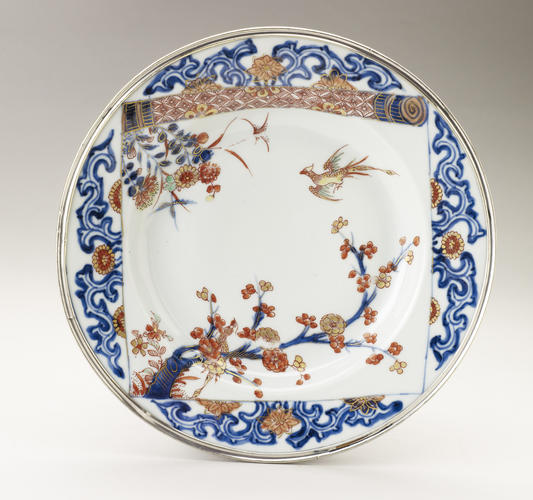-
1 of 253523 objects
Set of plates plates: 1710-40, mounts: 18th century
Porcelain painted in underglaze blue, coloured enamels and gilt, with silver gilt | 3.2 x 22.3 cm (whole object) | RCIN 6435
-
A set of eleven Chinese porcelain plates painted in Japanese Imari style and with European silver-gilt rims. Painted across each face is a partly opened scroll forming a square, with a prunus tree with a perching peafowl in green and yellow, and another descending towards a clump of chrysanthemum; the scroll largely covering a ground of blue scrollwork with lotus and chrysanthemum blooms in red; on the reverse are two sketchy sprays.
Imari-style wares were made in China during the early eighteenth century to meet the Western demand which was no longer being satisfied from Japan. They are characterised by painting in underglaze blue combined with iron-red enamel and gilding, and at times further colours from the famille verte palette. The style was especially favoured in France, where wares painted with armorial devices were ordered by the court. George IV acquired important vases in this style, as well as numerous plates of an everyday character, many of them enhanced with silver-gilt rims, which were perhaps intended for dessert use for banquets at the Royal Pavilion, Brighton.
Text adapted from Chinese and Japanese Works of Art in the Collection of Her Majesty The Queen: Volume I. -
-
Medium and techniques
Porcelain painted in underglaze blue, coloured enamels and gilt, with silver gilt
Measurements
3.2 x 22.3 cm (whole object)
Other number(s)
